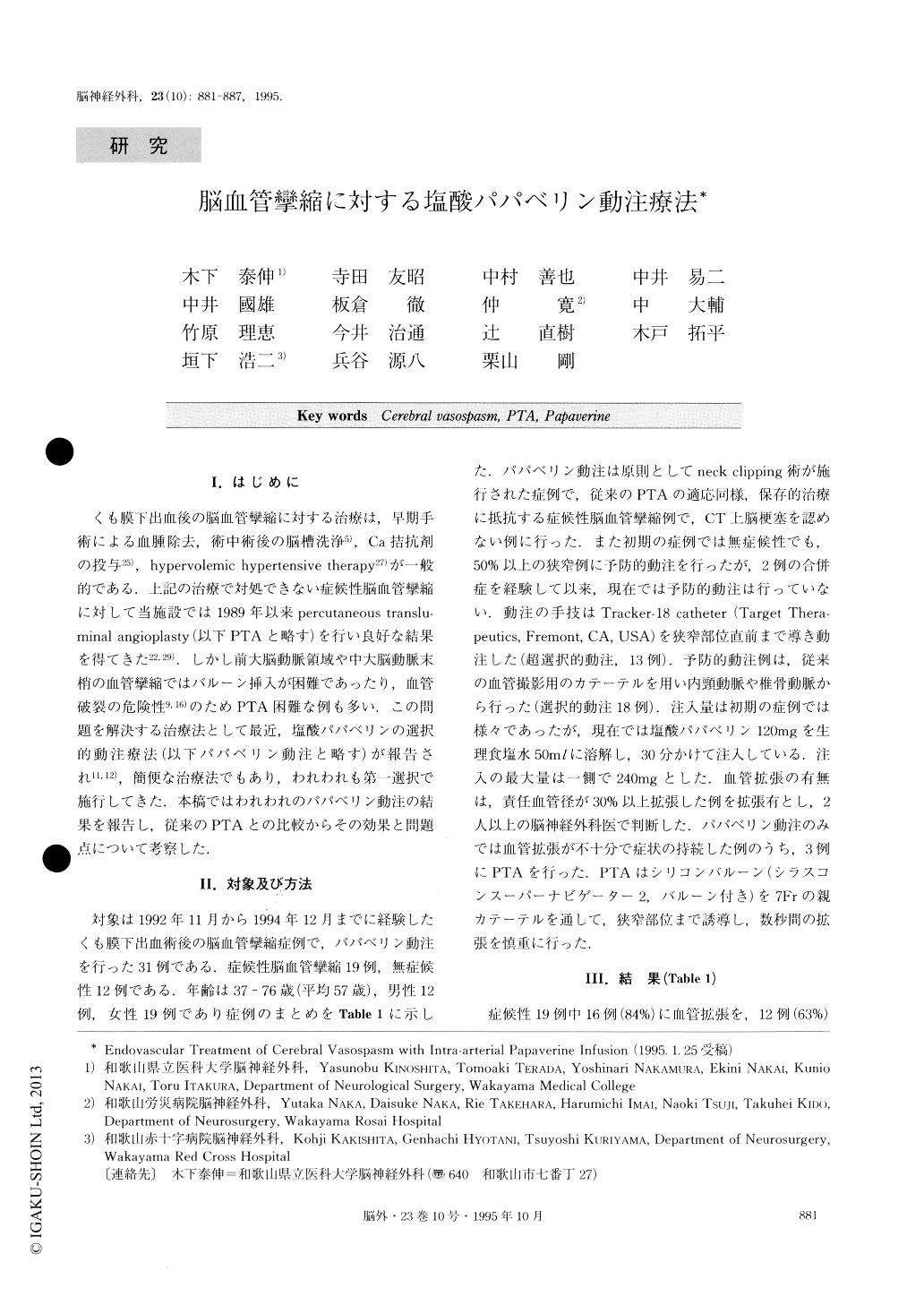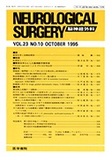Japanese
English
- 有料閲覧
- Abstract 文献概要
- 1ページ目 Look Inside
I.はじめに
くも膜下出血後の脳血管攣縮に対する治療は,早期手術による血腫除去,術中術後の脳槽洗浄5),Ca拮抗剤の投与25),hypervolemic hypertensive therapyc27)が一般的である.上記の治療で対処できない症候性脳血管攣縮に対して当施設では1989年以来percutaneous translu—minal angioplasty(以下PTAと略す)を行い良好な結果を得てきた22,29).しかし前大脳動脈領域や中大脳動脈末梢の血管攣縮ではバルーン挿入が困難であったり,血管破裂の危険性9,16)のためPTA困難な例も多い.この問題を解決する治療法として最近,塩酸パパベリンの選択的動注療法(以下パパベリン動注と略す)が報告され11,12),簡便な治療法でもあり,われわれも第一選択で施行してきた.本稿ではわれわれのパパベリン動注の結果を報告し,従来のPTAとの比較からその効果と問題点について考察した.
Thirty-one cases of cerebral vasospasm following subarachnoid hemorrhage were treated with intra-arterial papaverine infusion. Symptomatic cases were nineteen, and asymptomatic cases were twelve. Papaverine (120mg/saline 50ml, 30 min) was injected superselectively to vasospastic vessels through a micro-catheter. The rate of symptomatically improved cases was 63% initially, but about two thirds of those cases had recurrence within a day. The 63% of symptomatic cases showed infarction in spite of papaverine infusion.Three cases of recurrent vasospasm after intra-arterial papaverine underwent PTA and showed good dilata-tion of vasospastic vessels. The complications of our in-tra-arterial papaverine were hypotension in two cases, convulsion in one case and transient disturbed con-sciousness in one case. We experienced no fatal com-plications. Overall outcome was ADL1 (19%), ADL2 (25%), ADL3 (44%), ADL4 (0%), ADL5 (6%), and death(6%). Since the effect of intra-arterial papaverine infusion is of short duration and weak, combination of PTA and papaverine may be necessary. It is recom-mended to use papaverine for vasospasm in distal arte-ries such as M2, A1, A2, and to carry out PTA for prox-imal arteries such as ICA and M1.

Copyright © 1995, Igaku-Shoin Ltd. All rights reserved.


